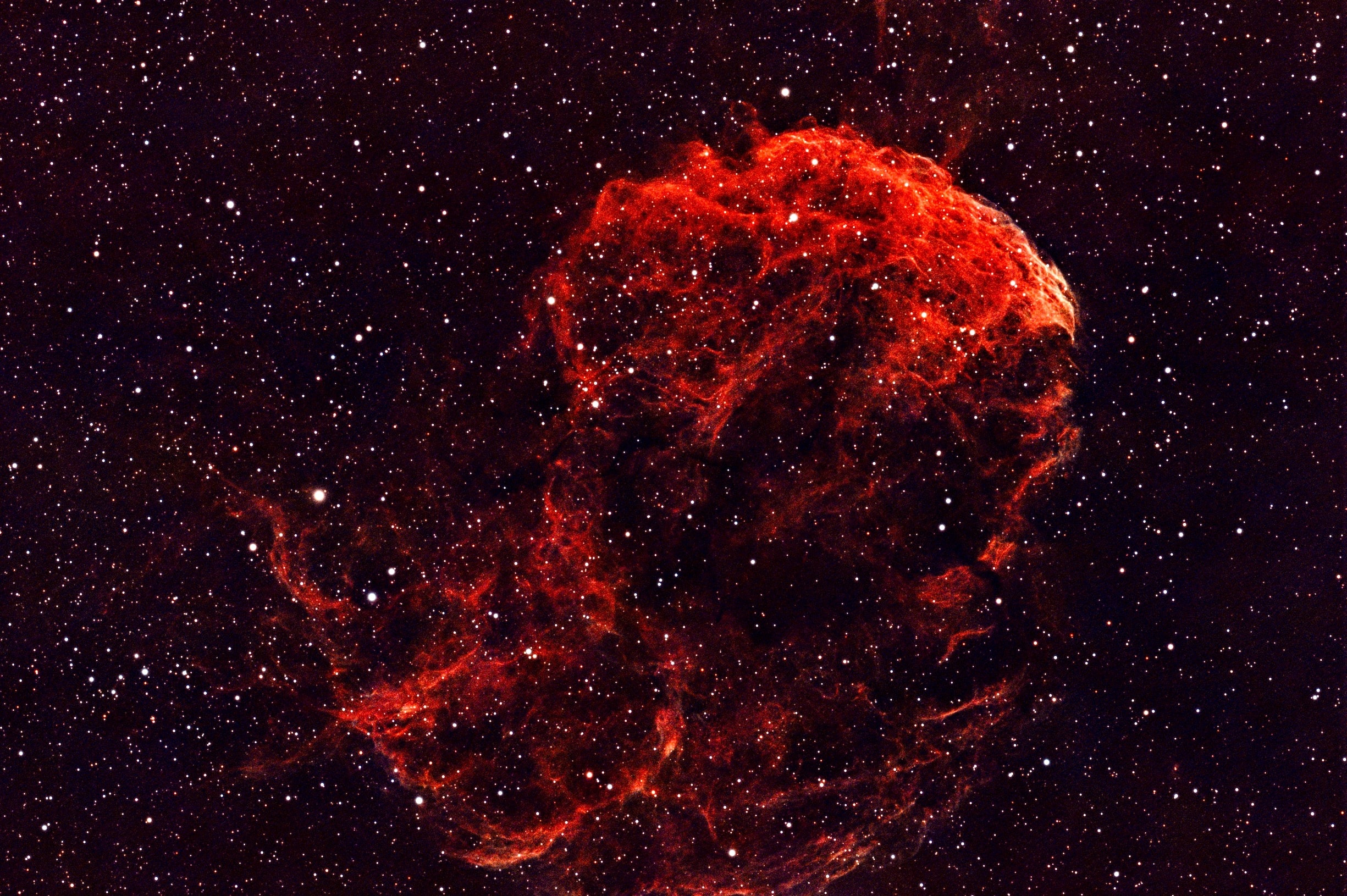
It’s often said that we know less about the bottom of the ocean than outer space, but who knew that aquatic creatures roamed the stars? IC 443, or the Jellyfish Nebula, is the wispy remains of a red supergiant star that went supernova thousands of years ago. When a star is larger than 10-15 solar masses, it only burns for several million years. During that time, it progressively expands and cools, and once it exhausts its nuclear fuel, the entire star will collapse under its immense gravity in a matter of seconds. However, instead of dissipating into nothingness, the outer layers of the star violently bounce off the extremely dense stellar core, resulting in an explosion which can outshine an entire galaxy for days. In fact, supernovae release so much energy that a number of them have been visible to humans during the daytime in the last several thousand years. Near the center of the Jellyfish is a pulsar neutron star known as J0617. Pulsars are formed from the imploded cores of supernovae, and are known for spinning at incredibly fast speeds while belching X-rays into space.
Acquisition Date: December 22, 2020–December 23, 2020
Acquisition Site: Backyard
Image Details: 118 x 180s (5h 54m)
Equipment: ZWO ASI2600MC-Pro, Takahashi TOA-130NFB, AP1200GTO, Radian Triad Ultra Filter 2″
